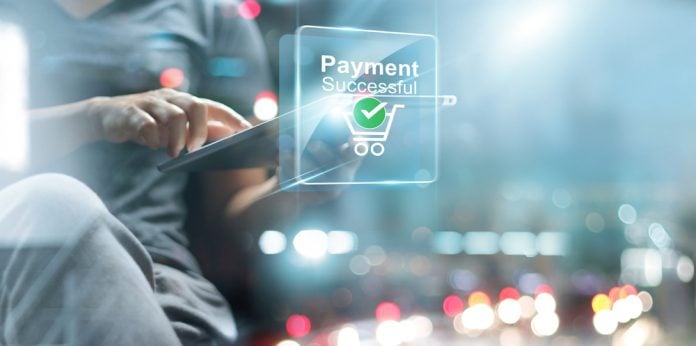Ahead of one of the busiest retail periods of the year, we spoke to Lee Jones, Managing Director Northern Europe, Merchant Services at Worldline, as he discussed the current trends in the space and the importance of embracing APMs.
Payment Expert: Firstly, are you able to tell us how the growth of APMs has impacted ecommerce engagement?
Lee Jones: Alternative Payment Methods (APMs) are having a tremendous impact on online shopping, transforming the consumer experience by making it more convenient and frictionless. APMs not only cover mobile and smartphone-based payment methods such as digital wallets (including Google Pay, WeChat Pay and Alipay), they also include in-app payment and pre-pay cards.
APMs allow merchants to create additional revenue, enhance consumer engagement and build trust and confidence through the provision of highly secure payment options. In addition, they increase transaction speed, which allows for a much faster checkout process.
PE: How crucial could the metaverse be to online shopping and what steps should merchants take to embrace this user experience?
LJ: At Worldline, we are keeping a close eye on the Metaverse and by ‘Metaverse’, we are referring to a network of virtual worlds in which physical cash does not exist. The development of this technology is closely associated with Web 3.0. The Metaverse is expected to replicate the value proposition of the internet itself and presents tremendous growth and revenue potential for merchants.
The technology is still in the early stages of development, however, we are convinced it will be part of the overall purchase ecosystem soon.
Businesses should seriously consider investing in ‘plots’ in the Metaverse, as living and doing business in this environment requires a proper virtual system to facilitate seamless and effective transactions, and digital payments are the primary vehicles for doing so.
Just as in the physical world, payments in the Metaverse can be made in various ways. The most common is through blockchain technology or digital currencies, which can be used to purchase goods and services. With that in mind, payment providers must look to proactively explore how to incorporate Metaverse payments to create the ultimate virtual payments experience, complete with new merchant sales channels and virtual showrooms.
PE: Consumer spending has dwindled as the cost-of-living crisis has worsened, what steps do retailers and payments firms need to accommodate this?
LJ: The question of how retailers can face the challenge of a drop in revenue resulting from a decline of consumer spending relates to the retailers’ business strategy.
Opening new stores in new regions could be an answer to help secure new revenue streams in unexplored geographical markets. Payment providers can support geographical expansion by offering payment solutions with lower fees and/or a global acceptance with local acquiring, thereby decreasing the cost of the payment itself. This would help retailers improve their operating margins.
In addition, paytech firms typically have a One Stop Shop offer, with a cross-border approach. It’s something which is very easy to deploy, as the gateway and acquiring are already certified. This will allow retailers to avoid complexity regarding IT and payment infrastructure.
Another way by which payment providers might help retailers is by providing them with new relevant payment solutions such as Buy Now Pay Later (BNPL), which operates as a payment facility rather than a consumer credit tool. This technology enables a secure payment to be integrated into the Electronic Funds Transfer at Point of Sale (EFTPOS) through three or four instalments, which in turn helps merchants to maintain or increase their revenue.
A payment facility is becoming the key to maintain the power of purchase in these challenging times. Along with other payment providers, Worldline offers BNPL solutions directly at checkout – online and soon in-store. We strongly believe that BNPL will allow ‘visitors’ to become ‘buyers’, which is the main challenge for bricks and mortar retailers, particularly during the current cost-of-living crisis.
PE: The cost-of-living crisis makes it more important than ever to retain customers. What can payment technology do to support retailers in retaining their customers?
LJ: Loyalty programmes combined with efficient payments is the first and most obvious example of a technology that can support retailers during this crisis. It enables them to adapt their offering and present more specific and tailored products to their customers which in turn should lead to higher rates of conversion.
Merchants should consider investing in their User Experience (UX) within the payment process, which is critical for a positive relationship with clients and for business success. UX specifically focuses on a specific product or a process. When a company invests in UX, it enhances customer satisfaction: satisfied customers are loyal and they trust the company’s products. Investing in UX increases customer retention, reduces the cost of customer acquisition and helps levels of satisfaction.
Global retailers should consider investing in a fully integrated payment solution for their global approach, as it will help them to expand geographically with more stores with the same infrastructure, which will provide a global view and a single reporting platform. That will strengthen business intelligence, customer knowledge, loyalty and develop better targeted marketing campaigns.
PE: What other trends do you believe will take centre stage within the retail payment journey in the coming years?
LJ: Live Shopping is a growing trend that we believe is likely to develop into the industry’s next ‘big thing’. Beginning in China but becoming increasingly global – having seen particular success during the pandemic – Live Shopping allows consumers to buy goods advertised by retailers or promoted by influencers ‘in real time’ through a live stream on their preferred device. In turn, this provides a far more tangible and immediate shopping experience, as viewers are able to view live demonstrations, discuss the goods on display and even try on various items of clothing before making a purchase.
Our partners’ statistics reveal that online consumers using Live Shopping have an average conversion rate of 17%, compared with the average e-Commerce conversion rate of between just 1-2%.
Software Point of Sale (SoftPOS) is another development that is starting to take centre stage. Put simply, this technology allows merchants to accept card payments directly on their smartphone or devices without the need for any additional hardware. In other words, SoftPOS allows merchants to turn their smartphone or tablet into a payment terminal via the simple installation of a single app.
The benefits of this technology are many, as the solution is highly cost-effective, reinforces in-store mobility, increases assisted sales and generally enhances in-store marketplaces.
Biometric payments is another trend to watch, although it is at a far more embryonic stage and presents greater challenges from a regulatory perspective. Whilst biometric capabilities currently exist on mobile to enable the authentication of a purchase on a consumer’s mobile, the technology cannot currently be applied to a merchant’s terminal.
Arguably, above all else, the biggest shift we anticipate in the future will be that of an entirely unified customer experience where the same seamless user journey is delivered irrespective of channel.
PE: What are the ongoing trends impacting the retail industry? (For example, the increase in online commerce, the rise of alternative payment methods, etc…)
LJ: We have observed some trends which originated prior to Covid-19 and which were reinforced by the pandemic.
One example is the Omnichannel customer journey. Merchants want to shorten the customer journey, hence there has been a steady rise of omnichannel user cases, such as ‘Click and Collect’, ‘’try it buy later’, ‘Scan and Pay’ (in stores).
Innovative technological payment methods are another significant ongoing trend in the industry. Contactless payments now account for over half of all transactions in some subsegments. Alternative payment methods are clearly on the rise, with digital wallets being particularly popular amongst consumers mainly through Google Pay and Apple Pay wallet.
One final point to make is related to proximity or convenience, as merchants have continued to reconsider their points of sales as vectors of consumption. A few years ago, these convenience style shops were relatively rare. Today, they are highly popular and maintain a dedicated consumer following.
PE: Like so many other industries, the retail sector is moving cashless. What should retail professionals do with their payment infrastructure?
LJ: How cash is handled in-store is an issue managed by retailers themselves. However, what we have seen is that retailers are introducing an increasing number of alternative payment methods, with new services such as QR codes and BNPL, which help shoppers to pay without using cash.
That is not to say however that cash will disappear entirely in the future. With a global payment solution and payment infrastructures that can manage all payments, retailers are well prepared to embrace the cashless evolution. But there will always be the need to have a cash register.
The solution we deliver today anticipates this continued decrease in the use of cash within payment infrastructure and takes the continual changes into consideration.
PE: Which innovative payment methods are particularly relevant to the retail sector and why?
LJ: I would argue mobile payment – i.e. Digital Wallets – is the most relevant. It is perhaps not the most innovative payment method in today’s highly digitised world, but certainly the most successful one. It brings security, safety and convenience to consumers, and is totally in-line with the trends that are driving changes in payments.
This technology allows retailers to combine payments and loyalty programmes where they can have the push enrolment and the “Burn and Earn” at the same time.
Mobile payments are also entirely contactless, which means a more convenient customer experience for shoppers. The pandemic may be over or at least receding, but people haven’t brushed aside health and safety concerns, and mobile payments clearly are a very good answer to these concerns.





















